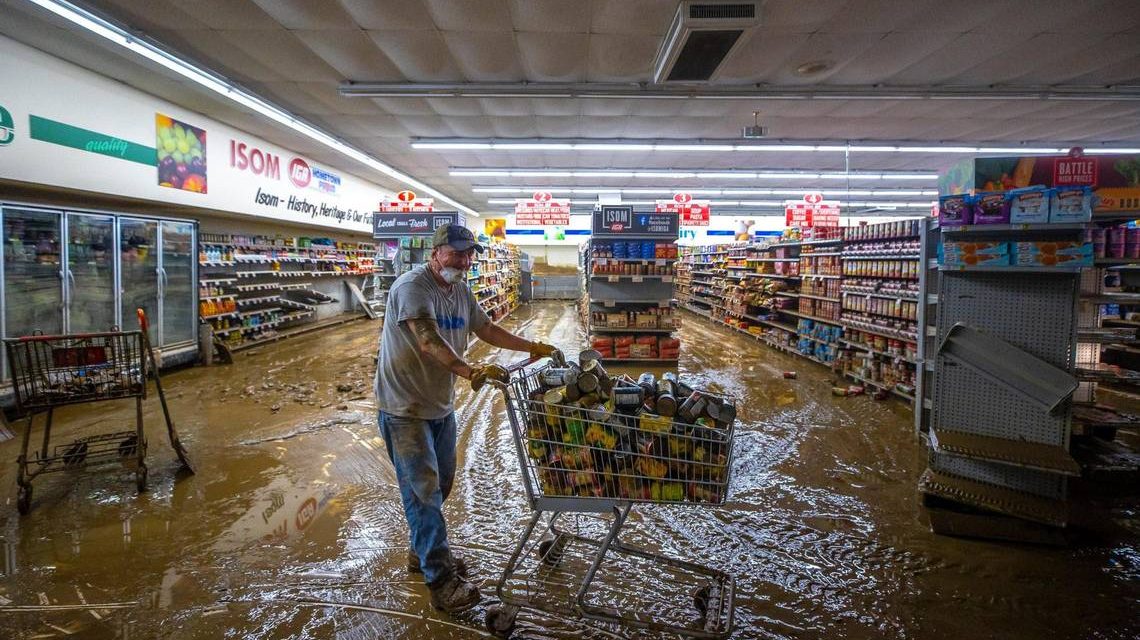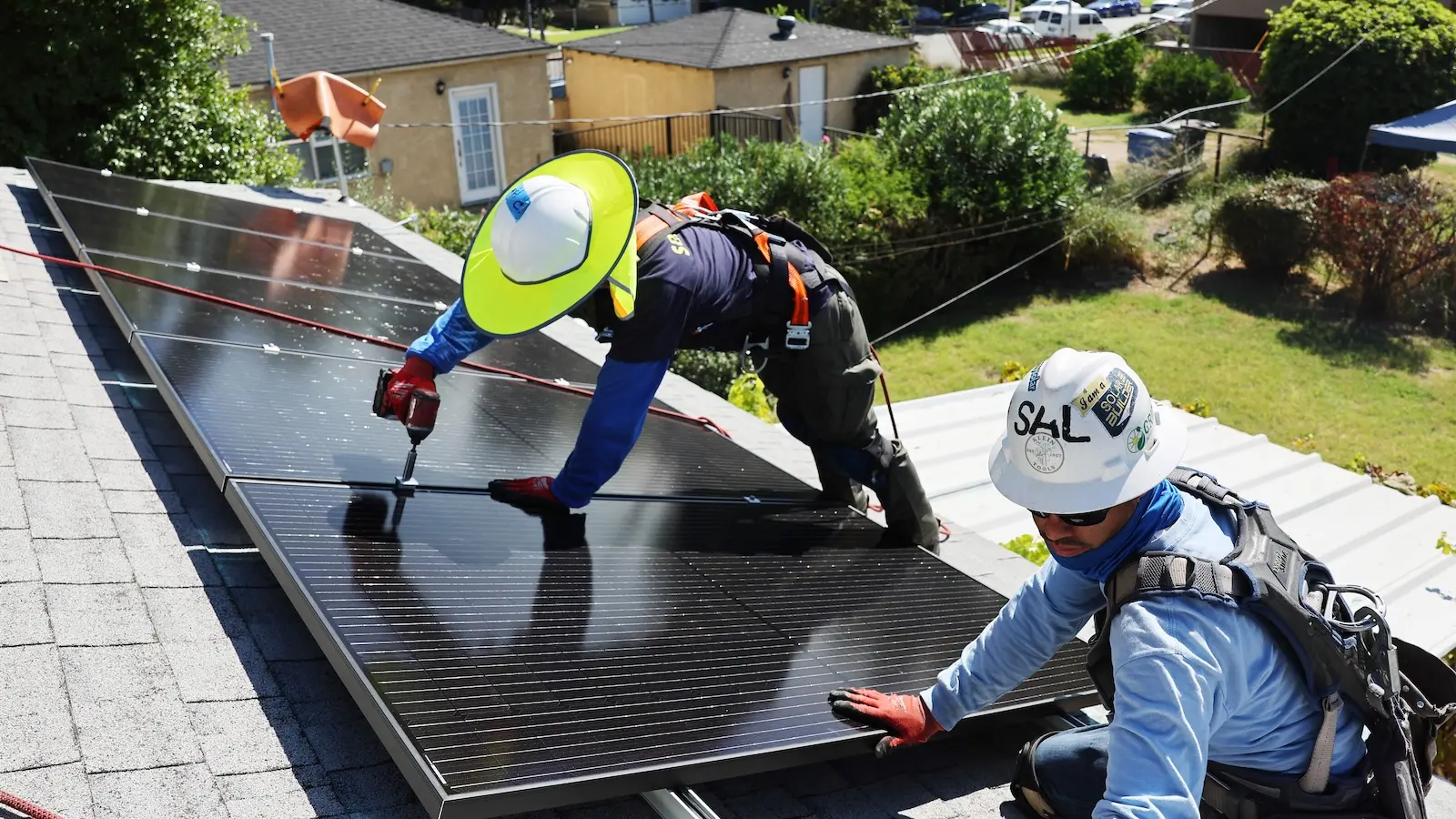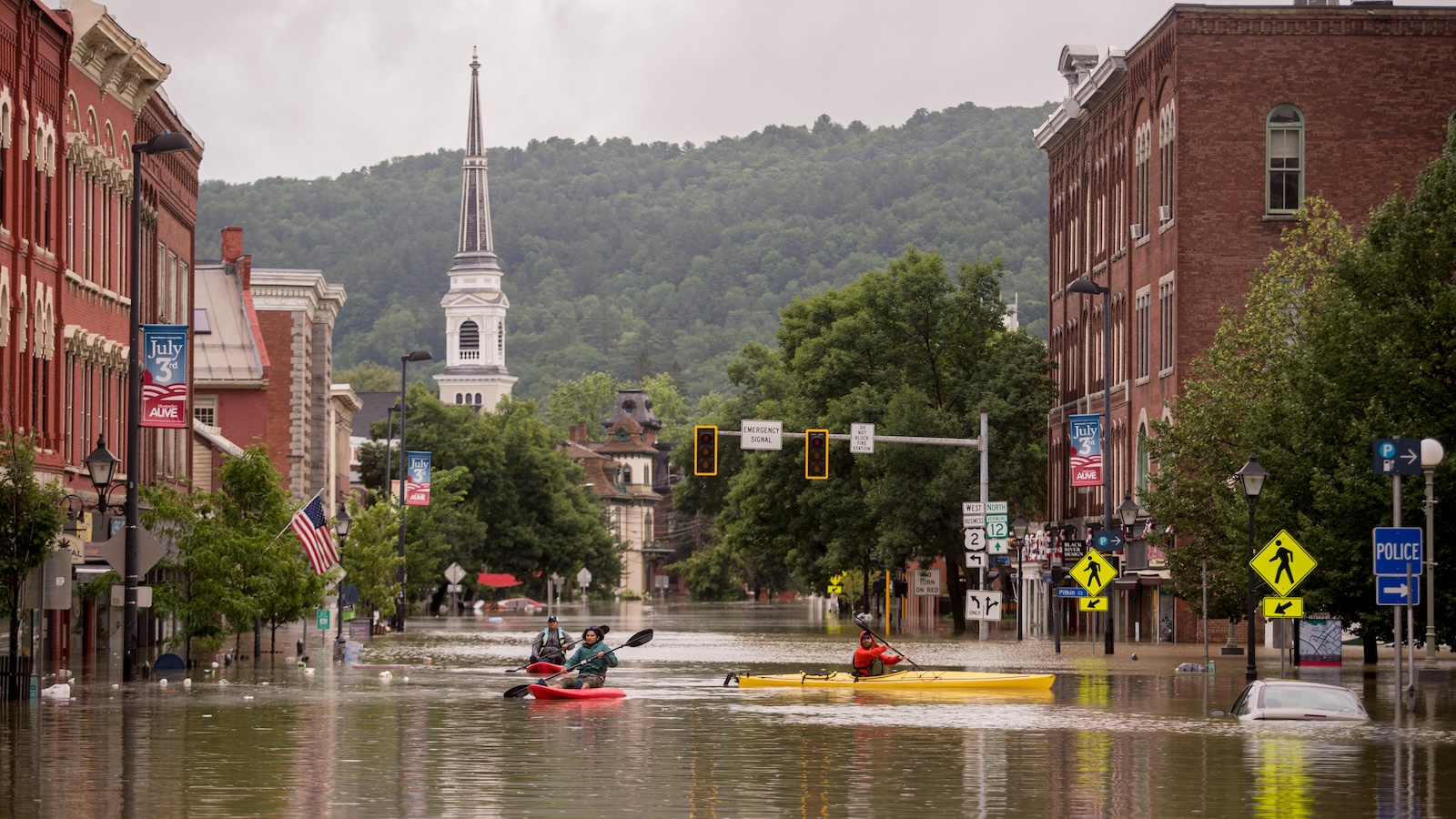This coverage is made possible through a partnership between Grist and BPR, a public radio station serving western North Carolina.
Gwen Christon runs an IGA grocery store in Isom, a town in eastern Kentucky that struggles with exorbitant utility bills and few grocery options. Climate change is worsening both problems. When the state’s record flood of 2022 devastated her supermarket, the town became a food desert as she scrambled to reopen. She soon turned to a small, local financial institution called the Mountain Association for help. With its support, the store, a steadfast community institution since it opened in 1973, found funding for rooftop solar, and more efficient coolers, heating, and air conditioning. Those improvements saved Christon enough on her power bills to reopen — and hire 10 additional employees.
“They’re reaping the benefits of reduced energy costs, so that they can reinvest back into their businesses and continue to grow their workforce [and] provide lower-cost groceries,” said Robin Gabbard, president of the Mountain Association.
The organization Gabbard leads is a community development financial institution, or CDFI, one in a network of small local lenders across Appalachia and the country that provide small loans to entrepreneurs and homeowners in rural and low-income areas.
Thanks to $500 million in funding from the Environmental Protection Agency, a new initiative called the Green Bank for Rural America could help channel money to nonprofit lenders like the Mountain Association to support community solar arrays, apprenticeships in renewable energy fields, electrified public transit, and other projects. The program will link over 75 rural CDFIs, with priority given to those in the Appalachian mountain region. It is part of the EPA’S $27 billion Greenhouse Gas Reduction Fund created to support financial organizations with a history of deep community relationships and investment in local projects.
“CDFIs kind of serve as the on-ramp for communities, and banks are on the highway,” said Donna Gambrell, president of Appalachian Community Capital, or ACC. The firm, established by the Appalachian Regional Commission, raises and distributes funds for community development financial institutions throughout low-income rural communities in Appalachia.
The funding awarded to ACC will help it provide more assistance to its small lender network. The steering committee for the Green Bank includes institutions from across Appalachia, including CommunityWorks Carolina, Grow America, and Coalfield Development. These funds are meant to jumpstart future private investment, with Gambrell estimating that ACC’s award will leverage $1.6 billion in private investment. The bank will prioritize the Appalachian region’s 582 counties and serve other swaths of rural America, particularly low-income areas, communities of color, and energy communities transitioning away from fossil fuel production.
The Green Bank for Rural America is intended to raise the lending capacity of organizations like Mountain Association and expand investment in all phases of the energy transition and climate resilience. Particular areas of focus include workforce training, renewable energy storage, electric transit, home energy efficiency, and disaster relief. The money will support work that many areas have been doing for a long time, Gabbard said.
CDFIs have historical roots in the 19th century, as Black and immigrant business owners, denied loans by white-owned banks, developed their own financial institutions. The Treasury Department formally recognized them in 1994 when it established the CDFI Fund. Now there are over 1,000 across the country, supporting projects that otherwise might not get financed.
The green banking movement began as a way to finance small clean energy projects, but it’s taken some time to attain national recognition. Since 2009, legislators from across the country have championed the creation of a national Green Bank seeded with public funding, in order to jumpstart potentially costly but essential renewable energy infrastructure at the smallest level. In August, the first nationwide green bank — the Coalition for Green Capital — launched with $5.1 billion from the Inflation Reduction Act.
It is one of more than a dozen green banks across the country. Such institutions underwrite residential solar and energy efficiency upgrades, deployment of alternative fuel vehicles, and other small-scale climate solutions. The Connecticut Green Bank estimates that it has prevented the emission of 11 million tons of carbon dioxide since its founding in 2011.
Jason Spicer, an assistant professor at the Marxe School of Public and International Affairs at Baruch College at CUNY, has for many years studied the impact of CDFIs in Appalachia. These projects, Spicer says, address financial inequalities at a small scale, but it can be difficult for them to change the underlying conditions that foster inequality. Place-based investments don’t always change structural problems, particularly in a region spanning so vast a geographical area and containing so many economies and material circumstances.
“There has long been tremendous amounts of investment into Appalachia,” Spicer said. “The problem is by whom and for what purpose.” As absentee landowners — coal companies, timber companies, speculators — invested in resource extraction, the wealth generated by these resources left the region, enriching the already wealthy.
“What are the models that ensure this wealth can be retained locally?” Spicer asked, suggesting that cooperative ownership and worker ownership may lead to a more equitable distribution of resources. One challenge of making the energy transition change financial relationships between capital and low-income communities is the scale of the needed transformation; $500 million, Spicer said, could help small lenders scale up, since the bureaucracy involved in microloans is often prohibitive for small lenders in low-income areas. The Green Bank could help bridge the gap by providing resources where they’re needed most.
“A benefit of the CDFI system in theory is that it’s targeting the places most in need,” Spicer said. “In theory, you’re not seeing this go to the strongest counties in the region, right?”
Gambrell said that’s exactly the goal. “We wanted to make sure that these were high impact projects, green projects, renewable energy projects that were in low wealth rural communities,” she said. “The projects themselves would help create jobs that stay in hard hit communities.”






